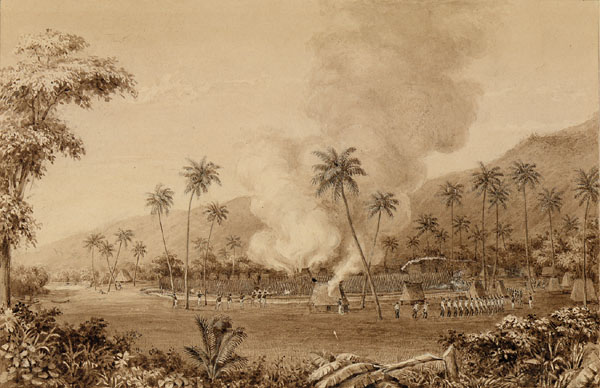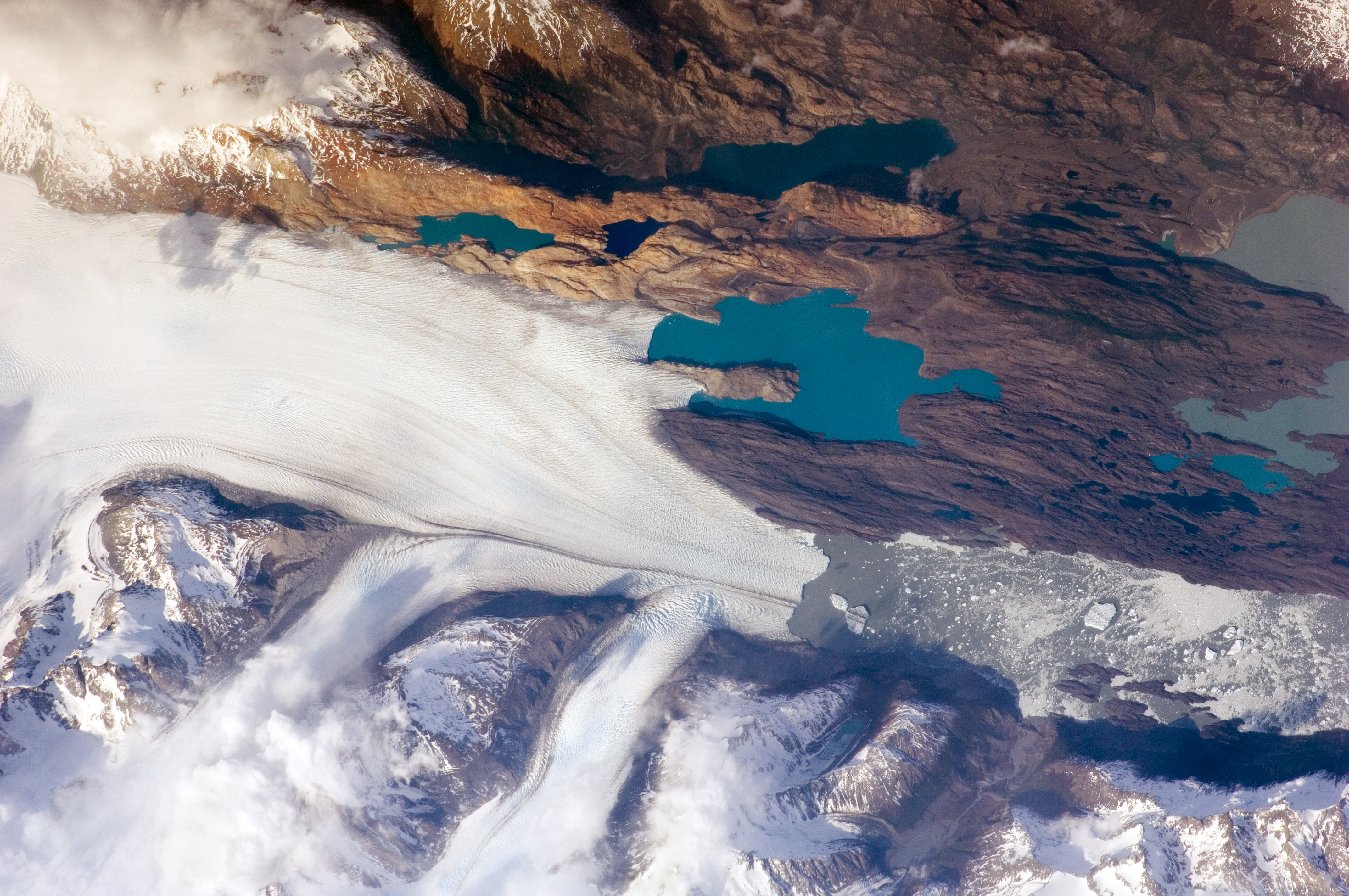|
Grannie Stone
The Grannie or Granny stone is either the only surviving part of a stone circle or a simple glacial erratic. It lies in the River Irvine below the Rivergate Centre in Irvine, North Ayrshire, Scotland. The Grannie Stane is clearly visible when the water is low. The GPS co-ordinates are . Grannie stone The Grannie Stone (or Granny Stane) is described as "One of Irvine's prehistoric puzzles", this boulder is either a glacial erratic left behind from the Ice Age or is the last remaining stone of a stone circle - others were removed, by blasting in 1897 and 1899, after the Irvine weir was constructed in 1895, but popular protests saved this remaining stone. The weir raised the water level and the stone became therefore became less prominent. The stones had been on the upstream side of the old Irvine Bridge. It was also humorously known as 'Paddy's Milestone' after Ailsa Craig due to its supposed resemblance to that island. Origin of the name There has been some speculation as to the o ... [...More Info...] [...Related Items...] OR: [Wikipedia] [Google] [Baidu] |
Stone Circle
A stone circle is a ring of standing stones. Most are found in Northwestern Europe – especially in Britain, Ireland, and Brittany – and typically date from the Late Neolithic and Early Bronze Age, with most being built from 3000 BC. The best known examples include those at the henge monument at Avebury, the Rollright Stones, and elements within the ring of standing stones at Stonehenge. Scattered examples exist from other parts of Europe. Later, during the Iron Age, stone circles were built in southern Scandinavia. Stone circles are usually grouped in terms of the shape and size of the stones, the span of their radius, and their population within the local area. Although many theories have been advanced to explain their use, usually related to providing a setting for ceremony or ritual, no consensus exists among archaeologists regarding their intended function. Their construction often involved considerable communal effort, including specialist tasks such as planning, quar ... [...More Info...] [...Related Items...] OR: [Wikipedia] [Google] [Baidu] |
Ordnance Survey
, nativename_a = , nativename_r = , logo = Ordnance Survey 2015 Logo.svg , logo_width = 240px , logo_caption = , seal = , seal_width = , seal_caption = , picture = , picture_width = , picture_caption = , formed = , preceding1 = , dissolved = , superseding = , jurisdiction = Great BritainThe Ordnance Survey deals only with maps of Great Britain, and, to an extent, the Isle of Man, but not Northern Ireland, which has its own, separate government agency, the Ordnance Survey of Northern Ireland. , headquarters = Southampton, England, UK , region_code = GB , coordinates = , employees = 1,244 , budget = , minister1_name = , minister1_pfo = , chief1_name = Steve Blair , chief1_position = CEO , agency_type = , parent_agency = , child1_agency = , keydocument1 = , website = , footnotes = , map = , map_width = , map_caption = Ordnance Survey (OS) is the national mapping agency for Great Britain. The agency's name indicates its original military purpose (se ... [...More Info...] [...Related Items...] OR: [Wikipedia] [Google] [Baidu] |
Archaeological Sites In North Ayrshire
Archaeology or archeology is the scientific study of human activity through the recovery and analysis of material culture. The archaeological record consists of artifacts, architecture, biofacts or ecofacts, sites, and cultural landscapes. Archaeology can be considered both a social science and a branch of the humanities. It is usually considered an independent academic discipline, but may also be classified as part of anthropology (in North America – the four-field approach), history or geography. Archaeologists study human prehistory and history, from the development of the first stone tools at Lomekwi in East Africa 3.3 million years ago up until recent decades. Archaeology is distinct from palaeontology, which is the study of fossil remains. Archaeology is particularly important for learning about prehistoric societies, for which, by definition, there are no written records. Prehistory includes over 99% of the human past, from the Paleolithic until the advent of ... [...More Info...] [...Related Items...] OR: [Wikipedia] [Google] [Baidu] |
Granny Kempock Stone
The megalithic Kempock Stone, popularly known as Granny Kempock (perhaps because of its resemblance to an old woman), stands on a cliff behind Kempock Street, the main shopping street in Gourock, Scotland. The stone, or menhir, is grey mica schist and of indeterminate origin, but it has been suggested that it is an old altar to the pagan god Baal, or a memorial to an ancient battle. Supposedly there is a superstition that for sailors going on a long voyage or a couple about to be married, walking seven times around the stone would ensure good fortune. A flight of steps winds up to the stone from Kempock Street below. There is also an association with witchcraft. In 1662 Marie Lamont and a group of other local women were burned to death in the local area after it was alleged that she and her coven had danced around the stone on the sabbath, with the intention of cursing and sinking shipping that passed through the Clyde by casting the long-stone into the sea. A decorative iron ar ... [...More Info...] [...Related Items...] OR: [Wikipedia] [Google] [Baidu] |
William Wallace
Sir William Wallace ( gd, Uilleam Uallas, ; Norman French: ; 23 August 1305) was a Scottish knight who became one of the main leaders during the First War of Scottish Independence. Along with Andrew Moray, Wallace defeated an English army at the Battle of Stirling Bridge in September 1297. He was appointed Guardian of Scotland and served until his defeat at the Battle of Falkirk in July 1298. In August 1305, Wallace was captured in Robroyston, near Glasgow, and handed over to King Edward I of England, who had him hanged, drawn and quartered for high treason and crimes against English civilians. Since his death, Wallace has obtained an iconic status far beyond his homeland. He is the protagonist of Blind Harry's 15th-century epic poem '' The Wallace'' and the subject of literary works by Jane Porter and Sir Walter Scott, and of the Academy Award-winning film '' Braveheart''. Background William Wallace was a member of the lesser nobility, but little is definitely known of ... [...More Info...] [...Related Items...] OR: [Wikipedia] [Google] [Baidu] |
John Balliol
John Balliol ( – late 1314), known derisively as ''Toom Tabard'' (meaning "empty coat" – coat of arms), was King of Scots from 1292 to 1296. Little is known of his early life. After the death of Margaret, Maid of Norway, Scotland entered an interregnum during which several competitors for the Crown of Scotland put forward claims. Balliol was chosen from among them as the new King of Scotland by a group of selected noblemen headed by King Edward I of England. Edward used his influence over the process to subjugate Scotland and undermined Balliol's personal reign by treating Scotland as a vassal of England. Edward's influence in Scottish affairs tainted Balliol's reign, and the Scottish nobility deposed him and appointed a Council of Twelve to rule instead. This council signed a treaty with France known as the Auld Alliance. In retaliation, Edward invaded Scotland, starting the Wars of Scottish Independence. After a Scottish defeat in 1296, Balliol abdicated and was impriso ... [...More Info...] [...Related Items...] OR: [Wikipedia] [Google] [Baidu] |
Henry De Percy, 1st Baron Percy
Henry de Percy, 1st Baron Percy of Alnwick (25 March 1273 – October 1314) was a medieval English magnate. He fought under King Edward I of England in Wales and Scotland and was granted extensive estates in Scotland, which were later retaken by the Scots under King Robert I of Scotland. He added Alnwick to the family estates in England, founding a dynasty of northern warlords. He rebelled against King Edward II over the issue of Piers Gaveston and was imprisoned for a few months. After his release, he declined to fight under Edward II at the Battle of Bannockburn, remaining at Alnwick, where he died a few months later, aged 41. Origins Henry was born at Petworth in Sussex in 1273, seven months after his father's death, saving the family line from extinction, as two older brothers had died in infancy, and all six uncles had died without leaving any legitimate heirs. He was fortunate in having the powerful John de Warenne, 6th Earl of Surrey as his maternal grandfather. Henry ... [...More Info...] [...Related Items...] OR: [Wikipedia] [Google] [Baidu] |
Punitive Expedition
A punitive expedition is a military journey undertaken to punish a political entity or any group of people outside the borders of the punishing state or union. It is usually undertaken in response to perceived disobedient or morally wrong behavior by miscreants, as revenge or corrective action, or to apply strong diplomatic pressure without a formal declaration of war (e.g. surgical strike). In the 19th century, punitive expeditions were used more commonly as pretexts for colonial adventures that resulted in annexations, regime changes or changes in policies of the affected state to favour one or more colonial powers. Stowell (1921) provides the following definition: When the territorial sovereign is too weak or is unwilling to enforce respect for international law, a state which is wronged may find it necessary to invade the territory and to chastise the individuals who violate its rights and threaten its security. Historical examples *In the 5th century BC, the Achaemenid ... [...More Info...] [...Related Items...] OR: [Wikipedia] [Google] [Baidu] |
Royal Commission On The Ancient And Historical Monuments Of Scotland
The Royal Commission on the Ancient and Historical Monuments of Scotland (RCAHMS) was an executive non-departmental public body of the Scottish Government that was "sponsored" inanced and with oversightthrough Historic Scotland, an executive agency of the Scottish Government. As one of the country's National Collections, it was responsible for recording, interpreting and collecting information about the built and historic environment. This information, which relates to buildings, sites, and ancient monuments of archaeological, architectural and historical interest (including maritime sites and underwater constructions), as well as historical aspects of the landscape, was then made available to the public, mainly at no cost. It was established (shortly ahead of parallel commissions for Wales and England) by a Royal Warrant of 1908, which was revised in 1992. The RCAHMS merged with government agency Historic Scotland to form Historic Environment Scotland, a new executive no ... [...More Info...] [...Related Items...] OR: [Wikipedia] [Google] [Baidu] |
Glacial Erratic
A glacial erratic is glacially deposited rock differing from the type of rock native to the area in which it rests. Erratics, which take their name from the Latin word ' ("to wander"), are carried by glacial ice, often over distances of hundreds of kilometres. Erratics can range in size from pebbles to large boulders such as Big Rock () in Alberta. Geologists identify erratics by studying the rocks surrounding the position of the erratic and the composition of the erratic itself. Erratics are significant because: *They can be transported by glaciers, and they are thereby one of a series of indicators which mark the path of prehistoric glacier movement. Their lithographic origin can be traced to the parent bedrock, allowing for confirmation of the ice flow route. *They can be transported by ice rafting. This allows quantification of the extent of glacial flooding resulting from ice dam failure which release the waters stored in proglacial lakes such as Lake Missoula. Erratics ... [...More Info...] [...Related Items...] OR: [Wikipedia] [Google] [Baidu] |
Gourock
Gourock ( ; gd, Guireag ) is a town in the Inverclyde council area and formerly a burgh of the County of Renfrew in the west of Scotland. It was a seaside resort on the East shore of the upper Firth of Clyde. Its main function today is as a residential area, extending contiguously from Greenock, with a railway terminus and ferry services across the Clyde. History The name Gourock comes from a Gaelic word for "pimple", in reference to the hill above the town. As far back as 1494 it is recorded that James IV sailed from the shore at Gourock to quell the rebellious Highland clans. Two hundred years later William and Mary granted a Charter in favour of Stewart of Castlemilk which raised Gourock to a Burgh of Barony. In 1784 the lands of Gourock were purchased by Duncan Darroch, a former merchant in Jamaica. He built Gourock House near the site of the castle in what the family eventually gifted to the town as Darroch Park, later renamed by the council as Gourock Park. From a sma ... [...More Info...] [...Related Items...] OR: [Wikipedia] [Google] [Baidu] |
Ailsa Craig
Ailsa Craig (; sco, Ailsae Craig; gd, Creag Ealasaid) is an island of in the outer Firth of Clyde, west of mainland Scotland, upon which microgranite has long been quarried to make curling stones. The now-uninhabited island comprises the remains of a magmatic pluton formed during the same period of igneous activity as magmatic rocks on the nearby Isle of Arran. The island, colloquially known as " Paddy's milestone", was a haven for Catholics during the Scottish Reformation in the 16th century, but is today a bird sanctuary, providing a home for huge numbers of gannets and an increasing number of puffins. Etymology An early reference to the rock is made by Sir Donald Monro, Archdeacon of the Isles, who referred to the rock as "Elsay" in the 16th century. The modern name of the island is an anglicisation of the Gaelic, ''Aillse Creag'' meaning "fairy rock". An alternative Gaelic name is ''Creag Ealasaid'' meaning "Elizabeth's rock". The first element, ''Aillse'' may repres ... [...More Info...] [...Related Items...] OR: [Wikipedia] [Google] [Baidu] |
.jpg)

.jpg)





